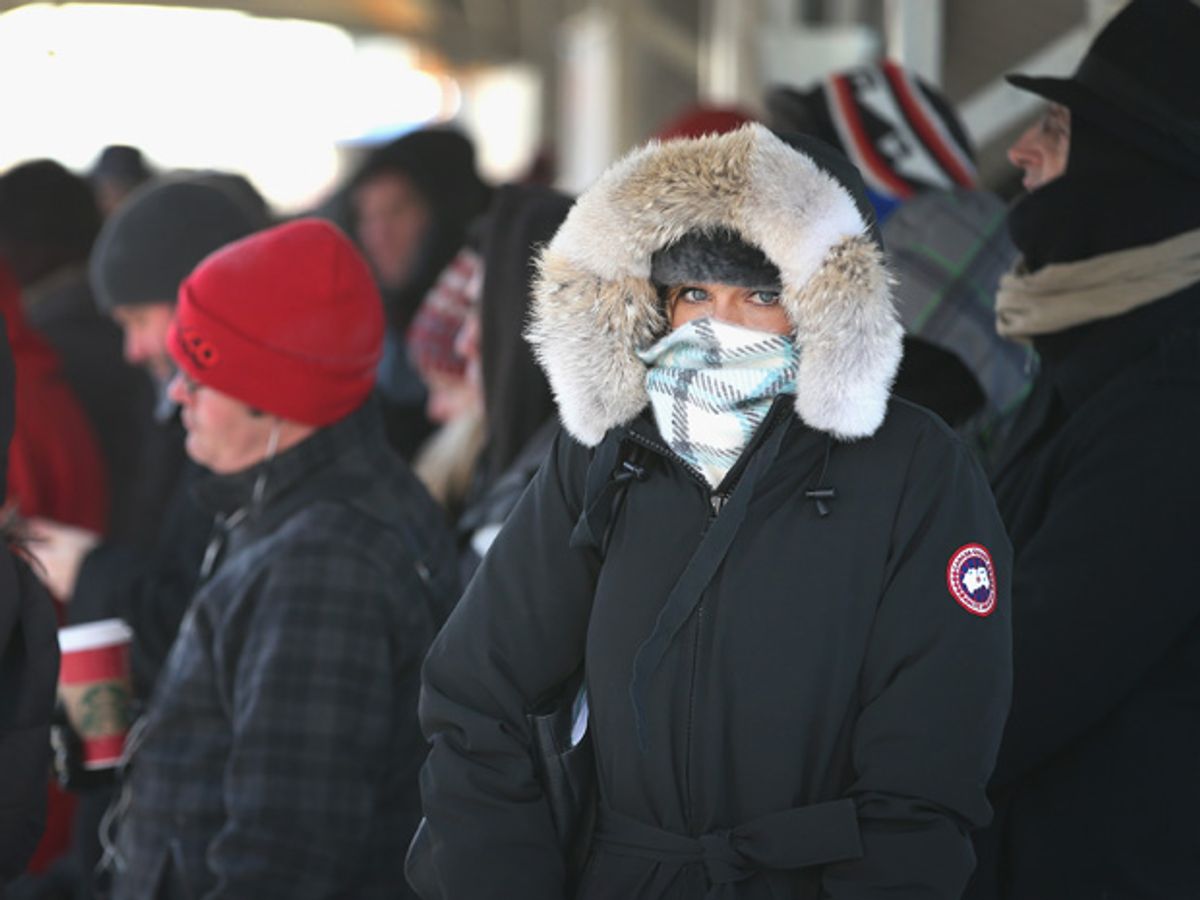As record cold temperatures plowed across much of the United States earlier this week, no piece of infrastructure was left unaffected. Trains were stalled, flights were cancelled, and schools were closed.
Although most people might not have noticed, the electrical grid was not immune to the effects of the cold snap. PJM Interconnection, the largest U.S. grid operator, hit a new record winter peak use of 141 500 megawatts. The peak energy use came at a time when nearly 20 percent of the generators in PJM's territory were down due to the frigid weather. On Wednesday morning, nearly 40 000 megawatts of PJM’s 190 000-MW installed capacity were offline.
Some of the generation losses were due to natural gas pipeline constraints, which caused gas price spikes across much of the United States. Natural gas is also the most predominant heating fuel in the U.S.; as more utilities build gas generators, they must compete with other natural gas needs during cold spells.
But natural gas availability was only a small part of the picture. Steam-cycle fossil fuel-fired power plants (primarily coal) made up about half of the outages, with diesel generators making up the second largest portion.
PJM does not require power plant operators to specify why generators have gone down, but it seemed as if nearly every cause of failure played a role this week. In some cases, coal stacks were frozen or diesel generators simply couldn’t function in such low temperatures.
“It’s been everything,” Michael Kormos, executive vice president of operations for PJM, said of the failures. “From mechanical problems to just normal fails that happen when we push them as hard as we’re pushing them.” Because so much generation was unavailable during the high-demand, PJM was asking any operators to deliver the greatest possible output from available generators.
To cope with the thin margins, PJM operators cut voltage by 5 percent at times and asked residential and small business customers to reduce their power use. PJM also invoked demand response, where it asks large power users to reduce their load. EnerNOC, one of the largest demand response aggregators in the United States, said this week’s events were the largest winter dispatch in the company’s history.
New York’s Independent System Operator and Texas’s ERCOT also relied on demand response to meet electrical demand during the cold weather. While demand response was once primarily used during the hottest days of summer, it is now seen as a resource that can be called upon all year long to balance grid needs and help in emergencies.
When they could, PJM operators bought extra power from neighboring grids.
PJM is also investing billions of dollars in transmission upgrades to cope with the loss of retiring coal plants and the variability that comes with increased renewable energy; these improvements may have helped with generation issues over the past week.
Some local utilities outside of PJM, particularly in the southeast, did not fare nearly as well because of a greater incidence of generators that were unprepared to operate in frigid conditions. The Tennessee Valley Authority, for example, had to shut down Murray State University to avoid a larger blackout. ERCOT, the grid operator in Texas, narrowly avoided rolling blackouts. After rolling blackouts during winter of 2011, ERCOT demanded that generators invest more in winterization, which helped when the low temperatures spread into Texas this week.
Now that the polar vortex has lifted, it is unclear whether utilities will invest in winterization to arm their facilities against such extreme weather conditions. At least one South Carolina utility, SCE&G, which had rolling blackouts after remote transmitters froze, noted that it’s impossible to winterize every component but there would be lessons learned. For the large grid operators, such as PJM and ERCOT, there will also be lessons learned on how to avoid such close margins, even though the lights stayed on.
Photo: Scott Olson/Getty Images




